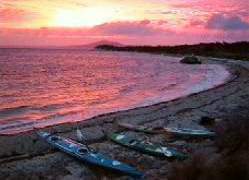 | As usual on our Christmas trips, I was up early to capture the tranquility and colour of the sunrise. Strolling down to check out the kayaks, for a fleeting moment I caught the warm rays of the sun on my face. Unfortunately the weather gradually got worse from then on. Today we would head north, around the western side of Cape Barren Island and up to Badger Island. We might even stop off for a "Barren burger" on the way. |
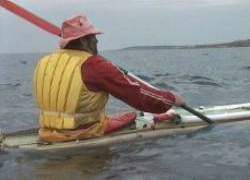 | Initially there was very little wind, but we made good progress due to the incoming tide racing around the island. If you look closely you can see that Laurie had quite a colony of flies on his back to start with. Not long after setting off I had to land and change the video camera batteries. This meant that Laurie was some distance in front. |
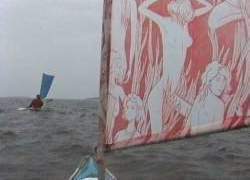 | It started to drizzle shortly after. A moderate westerly began to develop so it was upsails and relax. We had lost site of Laurie who had headed straight for Badger Island. Mick, Grant and I decided to run before the wind to the "Corner",Cape Barren Island township. |
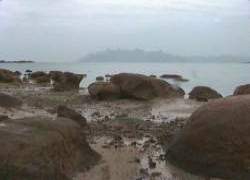 | We landed in cool, wet conditions among the unusually shaped rocks that clog the harbour. From here we could just make outStrzelecki Peaks across Franklin Sound. Hopefully the weather would clear later in the trip. We wanted to climb this peak for a magnificent panorama of the area. |
 | Nobody seemed to be around on this quiet Sunday morning. On previous trips it had been sunny and a pleasant place to have lunch. We recalled the time when one of our club members had asked to stop here to visit the small shop to buy a few last minute items such as a toothbrush! |
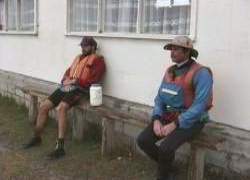 | We were disappointed to find the shop closed. This is a small community of people can trace their ancestory to the sealers, Straitsmen and Tasmanian Aborigines who were the first to inhabit this lonely outpost in Bass Strait. These people live by the sea and it is interesting to read old accounts of how they crossed between the many islands in small, fragile but seaworthy craft. |
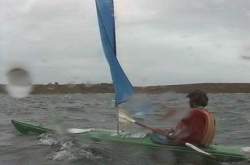 | We set off again in a now freshing wind. Just after rounding Long Island, the double lurched and broached into the choppy seas, broken rudder cable! We tried to thread a new cable down the small rudder wire tubing but opted for a quick fix instead. We wanted to get to Badger Island before the wind blew up anymore. It was still early afternoon and we would have plenty of time to make proper repairs after landing. |
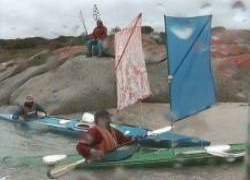 | We had quite an exciting ride after leaving Long Island. Rain squalls and gusts increased in intensity but we were comfortable, scooting along in quartering winds. The spray and rain reduced visiblity, especially when you cop a few "big ones" over the bow. Laurie had landed some time before and watched in amusement as we beat towards Badger Island. |
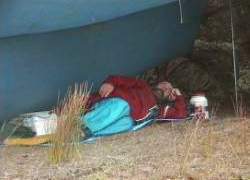 | Laurie had erected his trusty fly sheet under some protective bushes. We were camped very close to the site of an old settlement. Here in the 1870's a group of Straits' people dug gardens, gathered mutton birds, fished and lived in slendid isolation. In 1997 Tasmanian aborigines have returned to establish a project that will hopefully re-establish some of their cultural values and traditions. |
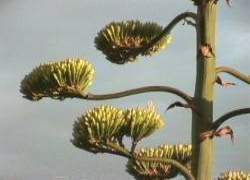 | Nearby, a huge Aloe Vera plant testified to the location of even earlier inhabitants, the ex-convicts and sealers who in the 1790's and early 1800's occuppied these islands as a refuge from the harsh penal settlements in Tasmania. One such person called himself "King of the Straits". |
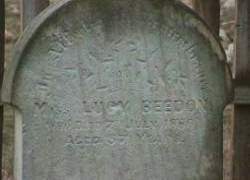 | I inspected Lucy Beedon's grave and wandered around in what was obviously the garden. Her house and mortal remains had gone but the fuschias and Spanish onions were doing well. This remarkable matriarch of the Furneaux Islands ran a school here and was the centre of a small community. A visiting clergyman documented the life of this isolated community on his "Mission to the Islands" between 1872-1885. |












